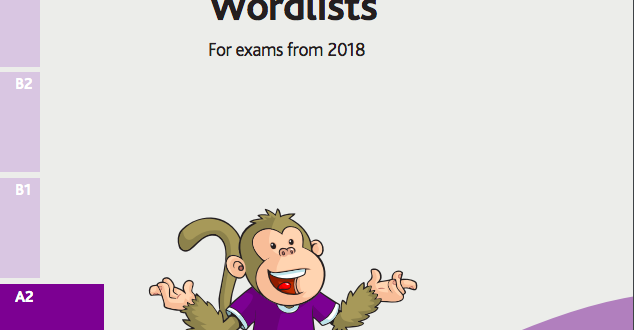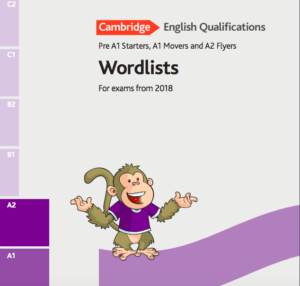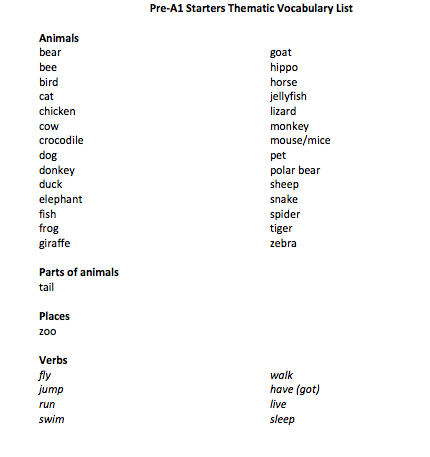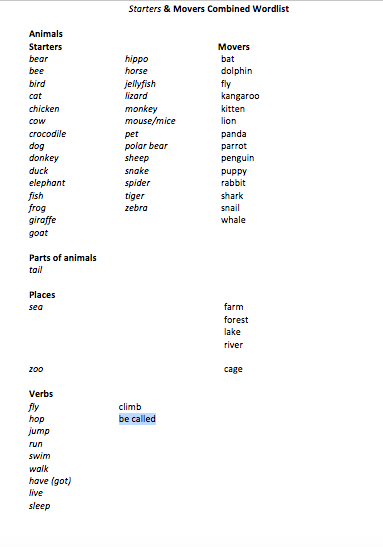Tips and ideas for working with wordlists
I thought it would be useful today to share some tips and ideas for working with wordlists , seeing as learners are probably coming up towards the end of the academic year, and very possibly, to an exam or end-of-year test.
At this point, revision, collecting together vocabulary they have been learning is an important step in their language learning.
It can go a long way to motivating learners if they can see just how much they’ve learned since they started in this class or on this topic.
So, I thought I’d share the wordlists I’ve been working on for the different topics on the Cambridge Pre-A1 Starters, A1 Movers and A2 Flyers Tests.
You can find the Wordlists for the Tests here:
(The thematic wordlists are on pages 38-43.)
I’ve made a few adjustments to the lists for each level. Here is the Pre-A1 Starters list. I’ve separated out the words tail and zoo, because although they are related to the topic, they are not animals. And I’ve added some verbs.
And here is the A1 Movers Animals wordlist, with the Starters words in italics.
And the Flyers combined Animal Wordlist. You can see that this time, I’ve added a new area to the list: adjectives.
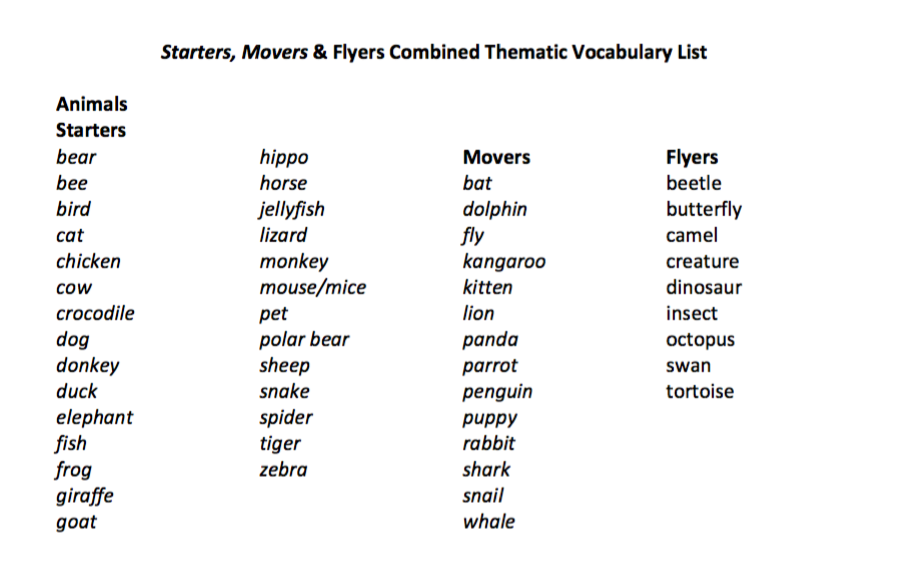
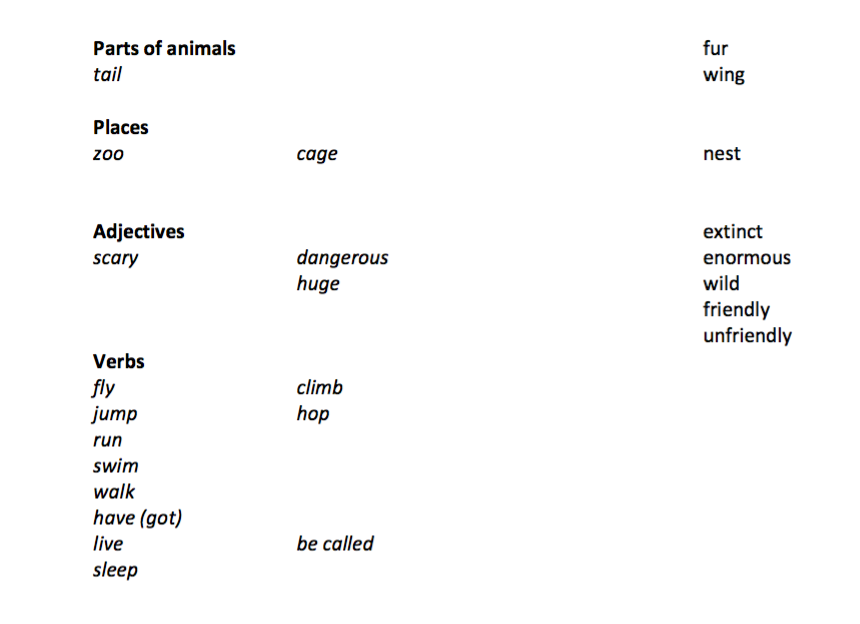
So, now for ways of using these wordlists.
At Pre-A1 Starters level, we can already talk about how animals move, so we can ask learners to find animal on the list that can fly, swim, run, jump. And learners could find the animals that have tails or make good pets.
At Movers level, we can talk about where different animals live. Which ones live on a farm? Which animals live in the jungle? Which animals do you sometimes find in a river?
And at Flyers level, we can ask them if they know why dinosaurs became extinct and which animals are in danger of becoming extinct like dinosaurs.
And we could also talk about how animals’ bodies help them live in places like the desert (e.g. camels, snakes), or very cold places (e.g. polar bears, penguins).
The important thing is to give learners a challenge, to help them to use the words, then hopefully, they will remember them better.
In my next post on the wordlists, I’ll look at some activities for working on the awareness of spelling.

